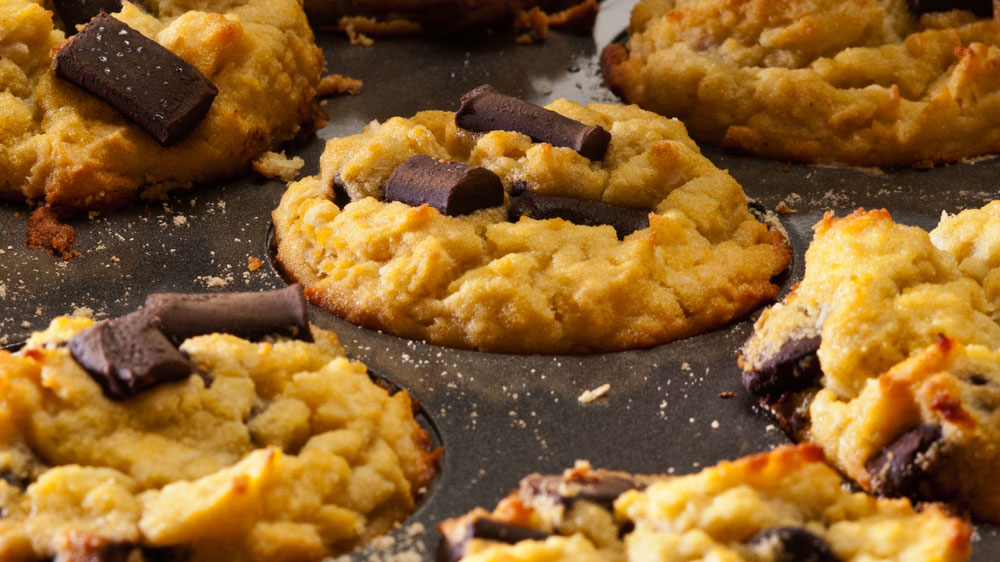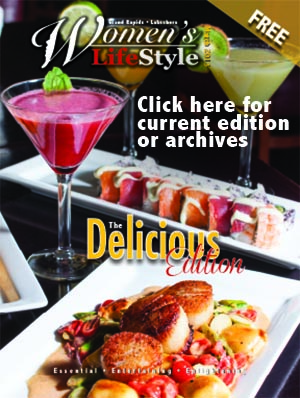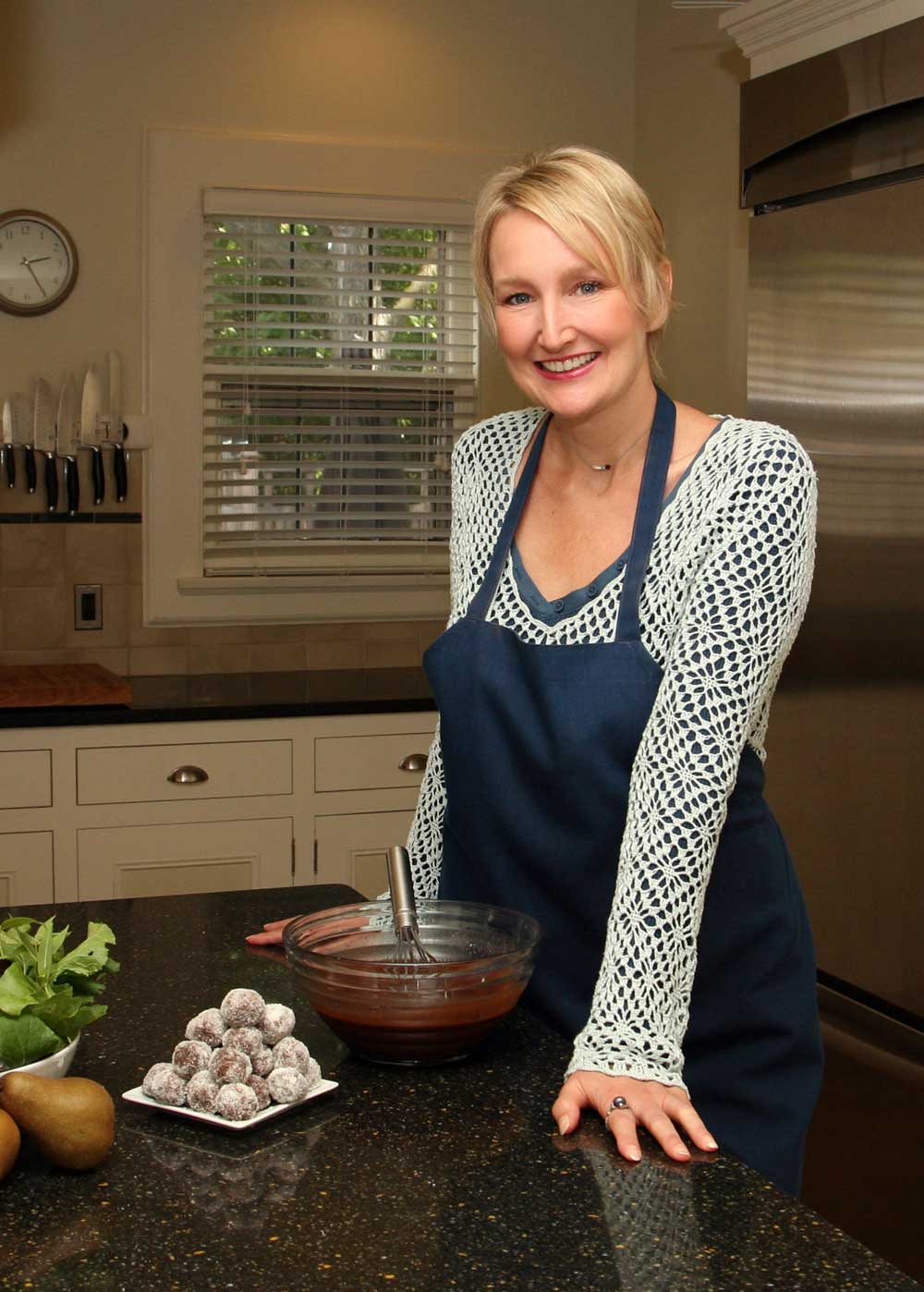Turn Me On, Muffin!
 Thursday, March 21, 2013 at 1:18PM
Thursday, March 21, 2013 at 1:18PM  Elisabeth Veltman, The Tender Foodie tagged
Elisabeth Veltman, The Tender Foodie tagged  Paleo muffins,
Paleo muffins,  coconut flour,
coconut flour,  how do I use coconut flour
how do I use coconut flour  Email Article
Email Article  Print Article in
Print Article in  Food History,
Food History,  Recipe
Recipe  PHOTOGRAPH BY JEFF HAGE, GREEN FROG PHOTO
PHOTOGRAPH BY JEFF HAGE, GREEN FROG PHOTO
Once a most fashionable, on the go treat, the muffin has become the ugly stepsister to the flashier, sweeter, more complex cupcake. At one time, however, muffins were so sexy that they sold them without the bottoms. A “stud muffin” was popular slang for a hot guy, and more recently (and more intimately), a “muffin” was a cutesy way to talk dirty about our lady parts.
Now, the top of this cup-sized bread has become the rather undesirable bulge that hangs over our jeans. What has happened to the muffin?
A WEE CAKEY HISTORY
The muffin has been around for centuries with only a few key pivots in its culinary transformation, despite its colorful cultural  As seen in Women's Lifestyle Magazine's March 2013 editionreferences. The English muffin dates back to the 10th century in Wales, and is a small, flat, yeast-raised bread that is cooked on a hot griddle. It began as a servants’ food of leftover bread, biscuit dough and mashed potatoes. When the aristocracy tasted the English muffin, it became a popular teatime bite. In the 18th century, street vendors called “muffin men” put tins on their heads, or wooden trays around their necks, rang bells, and sold these nooks and crannies on the streets.
As seen in Women's Lifestyle Magazine's March 2013 editionreferences. The English muffin dates back to the 10th century in Wales, and is a small, flat, yeast-raised bread that is cooked on a hot griddle. It began as a servants’ food of leftover bread, biscuit dough and mashed potatoes. When the aristocracy tasted the English muffin, it became a popular teatime bite. In the 18th century, street vendors called “muffin men” put tins on their heads, or wooden trays around their necks, rang bells, and sold these nooks and crannies on the streets.
The American muffin appears closer to the 18th century, and is more of a quick bread made from a batter, rather than dough like the English version. American muffins were also a way to turn leftover bread, fruits, even meats into a tasty treat.
So, what is the difference between a muffin and a cupcake? Gluten-free Pastry Chef Kyra Bussanich says that cupcakes get their flash from the higher ratio of sugar to flour, and because of the creaming method of whipping the butter (or fat) until its light, and then adding in the sugar, and then the eggs, and then finally adding the flour. This method creates a tender cake crumb after baking.
On the other hand, muffin batter usually starts with the dry ingredients mixed in one bowl, and then the wet ingredients mixed together in a separate bowl before combining with the hands or spoon. This method creates a bread-like texture.
PALEO: HEAR MUFFIN ROAR
Modern food allergies present new culinary challenges for the muffin, but I predict a muffin comeback. With over 20 million people developing gluten sensitivity and cross-reacting to different grains, people aren’t just going gluten-free, they are going GRAIN-free! This throwback to hunter-gatherer style eating is forcing yet another chapter in muffin history. The Paleo muffin. Now what could be sexier than a muffin in a loincloth?
One of the most popular flours to use in this Paleo diet is coconut flour. Here are a few tips on using coconut flour, and try this recipe for some yummy, grain-free muffins.
COCONUT CREAM MUFFINS
PREPARE
Preheat oven to 350 degrees F. Line a muffin tin with 12 muffin cups or heavily grease with coconut oil
Yield: 12 muffins
Gluten-free, Dairy-free, Soy-Free
INGREDIENTS
1 c. coconut flour (do not pack)
3/4 c. unsweetened coconut flakes
1/2 tsp. sea salt 1/2 c. coconut oil (melted, but not hot)
6 eggs (whisked)
15 oz. can of Thai East Organic Coconut Milk (with the coconut fat in the can mixed in to make the cream)
1/2 c. honey
1 tsp. gluten-free vanilla
1 c. chocolate chunks from Enjoy Life Foods (or chips, or mini-chips, or whole, raw cranberries)
COMBINE
In a large bowl, whisk together the coconut flour, salt, and coconut flakes, getting out any lumps that might remain. It is a good practice to sift the flour before you measure it, so no lumps or packed flour can throw off the recipe. In another med/large bowl whisk the eggs, then add in the coconut oil, honey, coconut cream, and vanilla. Slowly add in the coconut flour mixture to the egg mixture until well-combined. It will be a thick batter. Add in 1 cup of chocolate chunks or whole, raw cranberries.
BAKE
Place muffin cups into a muffin tin, or grease the tin well with coconut oil. This is a sticky, absorbent flour, so regular oil will get sucked into the batter and away from the tin. Spoon the batter into the prepared muffin tin so that each cup is evenly full. Bake at 350 degrees F. for about 30 min., or until the tops of the muffins are slightly brown and just firm to the touch. Do not overbake. Enjoy!
About Elisabeth
 Owner of Blue Pearl Strategies, Elisabeth is also The Tender Foodie. She started this blog and The Tender Palate, to help those food allergies and sensitivities.
Owner of Blue Pearl Strategies, Elisabeth is also The Tender Foodie. She started this blog and The Tender Palate, to help those food allergies and sensitivities.


Reader Comments